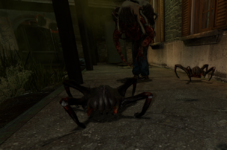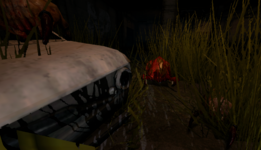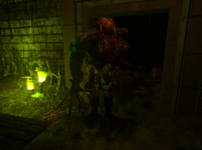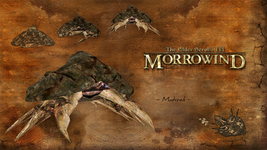
Hailing from the borderworld of Xen, the creatures known as "Head-Crabs," scientifically referred to as Craniumparasitus, exhibit intriguing characteristics unlike anything of earthly origin. Headcrabs are nest-borne organisms, their eggs hidden within these nests, making them exceedingly challenging to locate even if the nest is found. What sets them apart is their asexual mode of reproduction, lacking the need for distinct male and female counterparts.
Headcrabs bereft of a suitable host gradually develop a Nosos Heart within their bodies, rendering them incapable of latching onto hosts. Instead, they roam their territory in search of a suitable nesting site to begin the next generation. These creatures are notorious for their lowly position on the food chain and rarely partake in predation unless a fortunate encounter with a host presents itself. Numerous xenian predators, such as bullsquids, consider them a source of food.
One inherent vulnerability of the Headcrab lies in its rigid biological limitations; it can only infest humanoid hosts. This constraint further contributes to their marginalized position within their previous ecosystem of Xen.
The Headcrab Life Cycle
By Kranky
Baby Headcrabs

The first stage in any headcrab's life is that of a baby headcrab, being unable to latch onto a being's head and is merely growing from its nest - Or in some rarer cases in the modern time from a Gonarch. These headcrabs will undergo 1-2 weeks of growing until they are a full adult - Where they will either burrow into the ground to wait for prey or wander the wastes to find a host.
Approximately after half a week after hatching the baby-headcrab will separate from its nest, going off into finding a suitable place to burrow as they mature. Baby-Headcrabs will not attack beings larger than itself unless it has no other choice.

Adult headcrabs
Since the combine's rule on earth began there are three types of adult headcrabs. Two of which have been genetically modified to become a weapon for the combine's utility. Though however they all start as baby headcrabs.

Standard head-crab mutation tree
S-01 "Zombie"
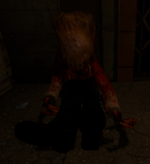
Stage one of the headcrab's host mutation process sees the host losing flesh around their hands, creating claws - and their torso being ripped open exposing the organs inside. The torso is used as its feeding point, being able to intake any form of meat - This is the most common stage that head-crabs die in due to their slow pace and lack of good vision. They typically wander in groups however many tend to roam alone.
S-02 "Large Zombie/Mutant"
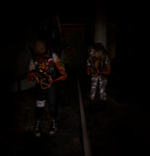
Stage two zombies tend to see much further mutations within their host's body, now turning the ribs into full on teeth - and turning the flesh around such into a functional mouth. This tends to take 1-2 weeks after initial coupling with the host. These zombies are more importantly much smarter and have better vision than that of the standard zombie, roaming in groups of four. They can see a variety of extra mutations along with this - being able to run on occasions or their size changing significantly.

Rare Occurances
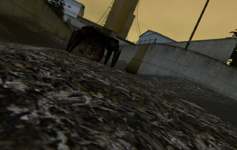
Gonarchs
A rare version of the head-crab that acts as a walking nest is the Gonarch, standing at incredible heights the Gonarch is an extremely capable foe. It is a side effect of the ever-so-rare "Alpha Headcrab", as alpha headcrabs can no longer couple with the head of a host - Merely utilizing their extremely strong attacks.
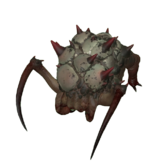
Armored Headcrabs
Armored headcrabs are the combination of a headcrab and a larger xenian infestation - It is a rare occurrence as only a certain xenian growth type may be able to create these head-crabs. They have a dense layer of hardened chitin able to withstand most standard weapon calibers- However they have a weakness where their beak lays.
Last edited:
